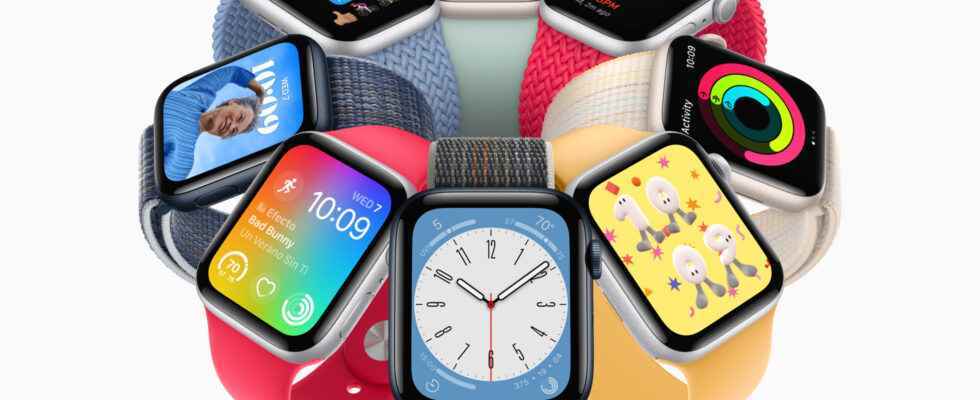The last connected watch Apple incorporates a temperature sensor, but is not the first to introduce this type of functionality.
The Apple Watch Series 8 offers relatively few new hardware features, apart from the integration of a temperature sensor.
A temperature sensor designed to improve the lives of Apple Watch users
Apple explained, during the presentation of its latest watch, how this new system works. Temperature detection is ensured by two separate sensors, one installed on the back of the watch and the other placed under the screen in order to obtain the closest measurement, regardless of external conditions, at 0.1 °C near.
This new feature has been designed primarily for users of the Apple Watch Series 8. The temperature sensor can be associated with the Cycle Tracking application, integrated into the Health software and which allows women to follow their menstrual cycles. The temperature analysis will refine the data collected by the watch, and inform users of the imminence of their next period of ovulation or a potential change in cycle.
The temperature sensor will also be used for all Apple Watch Series 8 owners at night. During their sleep, body temperature will be collected every five seconds and users can check the variations in the Health application after dawn, and thus detect the symptom of a smoldering disease.
An identical sensor at Samsung but usable only at night
Apple is not the first to offer a temperature sensor on a connected watch. Samsung edged it out by just a few weeks with the highly successful Galaxy Watch5 Pro that we tested a few days ago.
If Samsung has grilled the courtesy of its illustrious competitor, the manufacturer has not pushed the reflection so far concerning the use of a temperature sensor. For the moment, the Galaxy Watch5 and Galaxy Watch5 Pro only use it when analyzing sleep to detect possible variations during the night. It is impossible to use it manually during the day or to activate it by an option in the watch settings.
It is possible that Samsung did not go further in the use of its sensor the time to have its device validated by the competent medical authorities in each country. Samsung could later, if it obtains the necessary permissions, offer other health features and allow third-party developers to use the sensor for their own services.
Source : 9to5Google

0